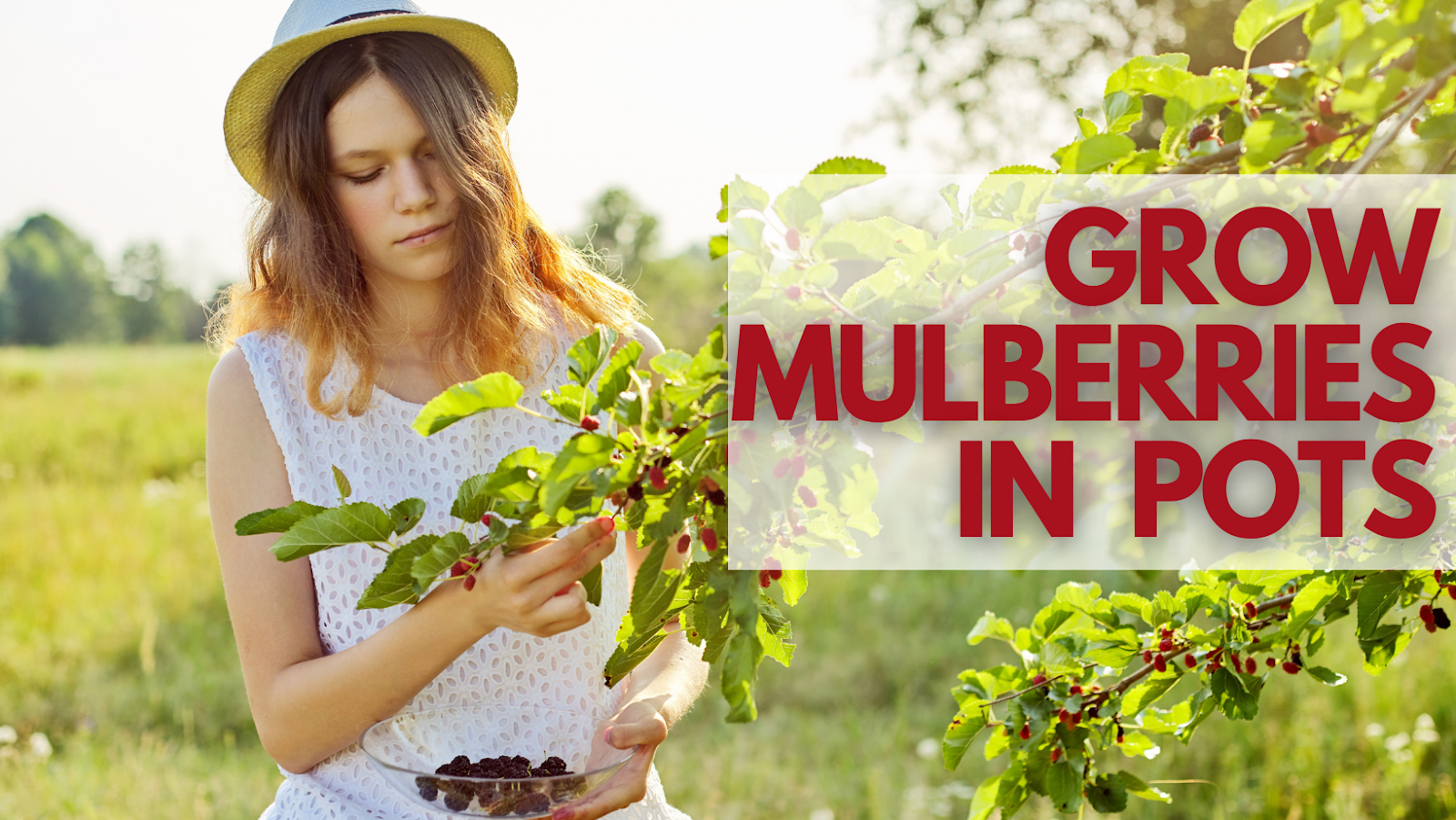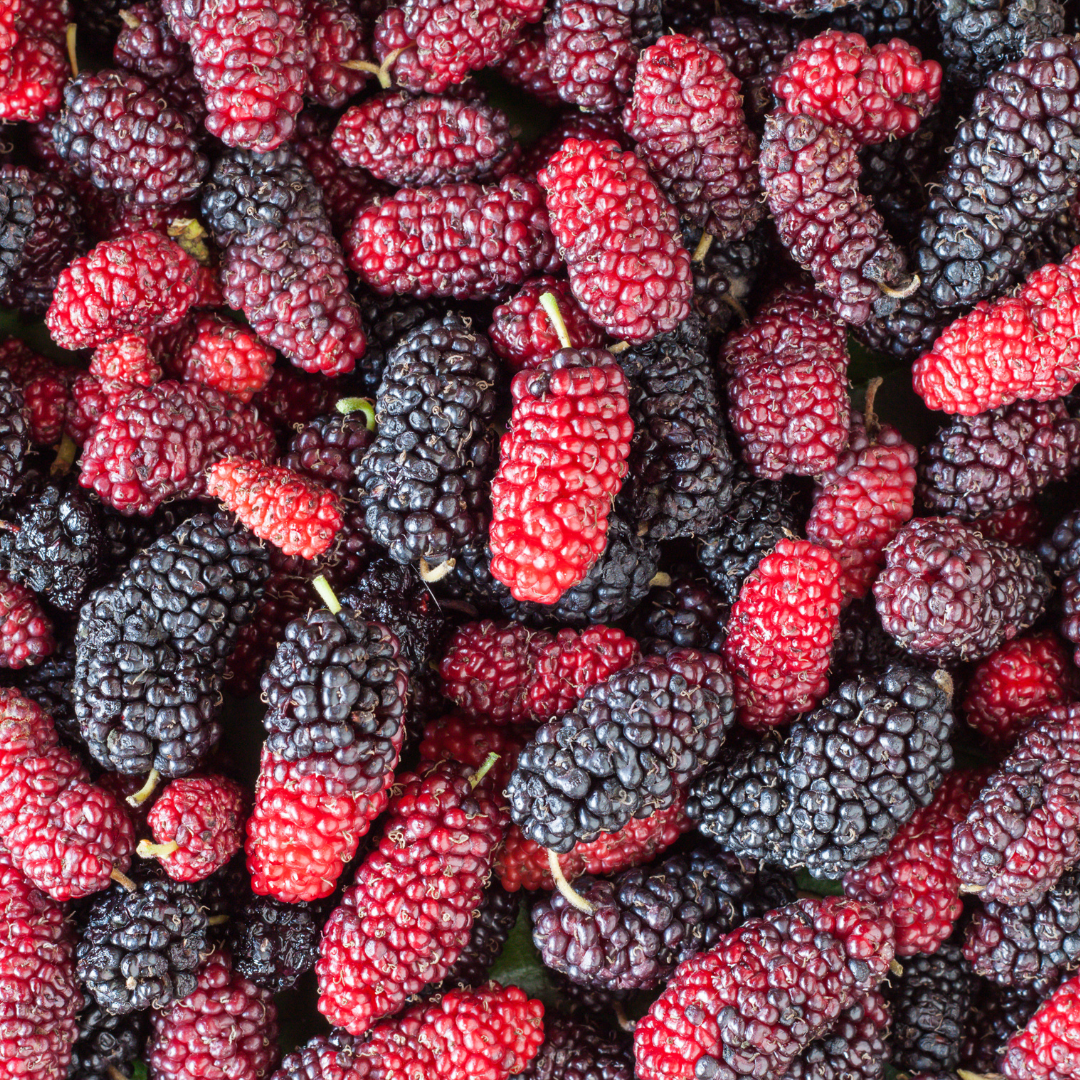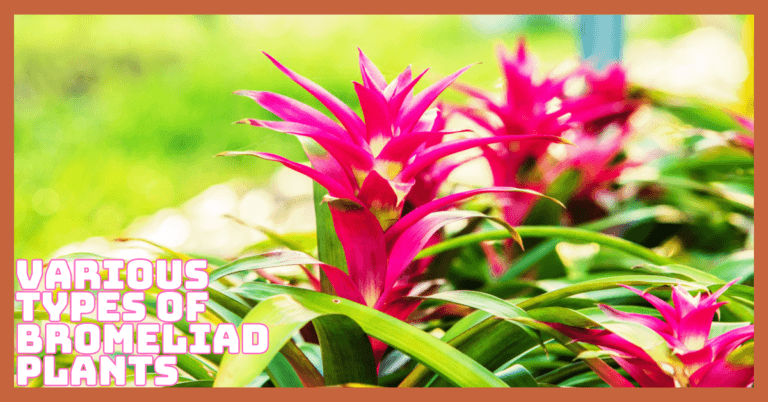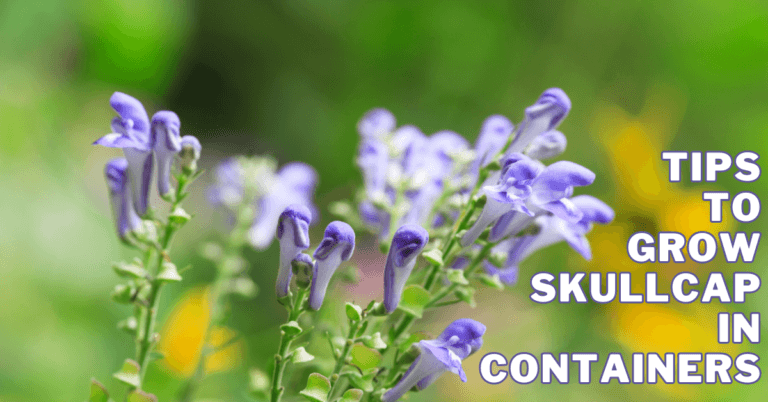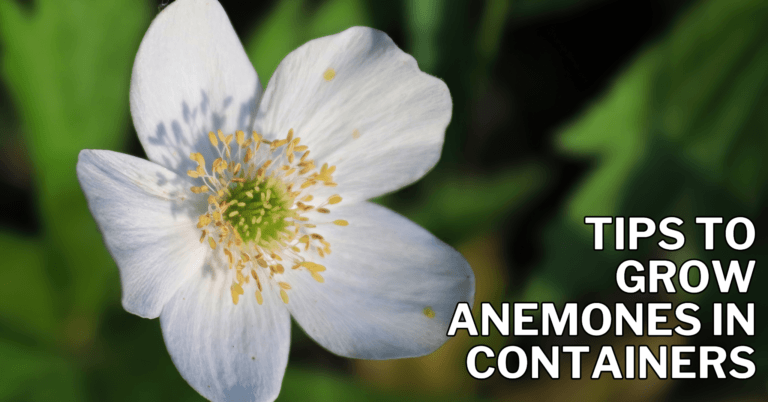Simple Ways To Grow Mulberries In Pots
Simple Ways To Grow Mulberries In Pots
The mulberry tree is a deciduous tree or large shrub that grows modest to medium in size. Some varieties easily exceed 30 feet in height, although the tree can be cut and the height controlled.
It is typically grown in the Mediterranean, Southeast Asia, North America, Australia, Northern Africa, and the Middle East, with cultivars varying according to temperate, subtropical, and tropical temperatures.
The cultivar also affects the size of the tree and the fruit's quality. Mulberry plants thrive in subtropical and light temperate climates.
According to the colour of their fruits, all fruiting mulberry species are categorized into red, white, and black.
Darker mulberries are sweeter and tastier than lighter mulberries. The mulberry tree also attracts a variety of wildlife, including rodents, birds, and other wild animals.
Mulberries are deciduous and fast-growing, with flowers resembling catkins and producing tasty berries. You might not notice the catkins until they turn colour as the berries ripen.
History & Origin Of Mulberry
Mulberry has a long and illustrious history. Mulberry trees were farmed by most ancient civilizations worldwide for their tasty berries. The tall trees with wide canopies were also utilized as shade trees.
Mulberry trees' uses grew as it was discovered that the enormous green mulberry leaves could be given to cattle.
In the silk trade, the leaves of the white mulberry have also been shown to be great feeding for silkworms.
When the Romans entered Britain, they took mulberry trees with them. Mulberry leaves were used to heal mouth, throat, and lung ailments, and the trees were employed for medicinal purposes.
People were also employing the roots of mulberry trees to get rid of tapeworms by the 17th century.
During Tudor times, they were only after that that their succulent berries were coveted throughout Europe. Henry VIII is claimed to have planted a mulberry tree on his Chelsea estate.
Later, King James decided that the United Kingdom should compete with France in the silk industry.
To feed the silkworms, he brought in 10,000 mulberry trees, some of which he planted in a vast mulberry garden outside Buckingham Palace.
The silkworm project failed because the King purchased black mulberry plants rather than the white mulberry trees that silkworms like.
Mulberry fever had also spread to the new globe. General Oglethorpe decided in 1733 to promote silk production in the British colony of Georgia.
Types Of Mulberry
In the United States, three varieties of mulberry trees are grown. Each has similar growing requirements and habits.
The primary differences are the size of the fruit, the taste, and the size of the tree. Before you grow mulberries in pots, you need to know these three varieties.
Red Mulberry (Morus rubra)
Red mulberry (Morus rubra), commonly known as American mulberry, is a native of the United States that grows to be around 40 feet tall and broad at maturity and lives for approximately 75 years. USDA zones 4 through 9 are suitable for the tree.
Red mulberries have the largest leaves of the three cultivated varieties, with serrated, heart-shaped foliage averaging 5 inches long.
Late spring sees the blooming of crimson to deep blue-black fruits that are about an inch long and have a sweet and tangy flavour. Trees can have both male and female flowers for pollination.
Black Mulberry (Morus nigra)
Black mulberries (Morus nigra) are Asian indigenous that are hardy in USDA zones 5 through 9. They provide what many believe to be the best taste of fruits.
At maturity, the self-fertile tree can grow up to 30 feet tall and wide; if left untrained, it will grow into a large bush.
The blackberries are the largest of the three types, growing up to 1.5 inches long and having a sweet-tart flavour. They have a long life span and can produce fruit for over a hundred years.
Like all mulberries, the fruits do not ripen all at once and continue to ripen over several months. The foliage is similar to that of the red mulberry, although it is smaller.
White Mulberry (Morus alba)
White mulberries (Morus alba), an Asian native, have the strongest cold resistance of the three species and are hardy in USDA zones 4 through 9.
At maturity, it is a big tree that grows over 50 feet tall and wide. White mulberry trees blossom and bear fruit earlier than the other two varieties, with flowering beginning in early spring.
The leaves of this particular mulberry are the principal food source for silkworms, which are used to make silk.
Because the berries lack tartness, many consider this cultivar the least flavourful of the three.
The fruits are the tiniest, varying in hue from white to pink to blackish purple. The leaves of the red and black mulberries are huge, glossy green, and deeply lobed, whereas the leaves of the red and black mulberries are dull green and have little gloss.
Nutrition Facts About Mulberries
A 3.5-ounce (100-gram) serving of fresh mulberries has the following nutrients:
- Calories: 43
- Water: 88%
- Fiber: 1.7 grams
- Protein: 1.4 grams
- Sugar: 8.1. grams
- Carbs: 9.8 grams
- Fat: 0.4 grams
Mulberries are often dried and eaten like raisins. They contain 70% carbohydrates, 14% fiber, 12% protein, and 3% fat in this form, making them quite high in protein compared to most berries.
Health Benefits Of Mulberries
Reduced Cholesterol
Cholesterol is a vital fatty substance in all your body's cells. Elevated blood cholesterol levels, on the other hand, are linked to an increased risk of heart disease.
Mulberries and mulberry extracts have been shown to reduce excess fat and cholesterol levels in animal experiments. They may also help to enhance the LDL (bad) to HDL (good) cholesterol ratio.
Furthermore, certain test-tube studies suggest that they inhibit fat production in the liver, potentially aiding in preventing fatty liver disease.
Reduces The Risk Of Cancer
Increased stress in the body has been linked to oxidative damage in cells and tissues, which has been linked to an increased risk of cancer.
For centuries, mulberries have been used in traditional Chinese medicine as a cancer treatment. Some scientists now feel that these rumoured cancer-preventive properties may be scientifically validated.
Antioxidants in mulberry juice have been shown in animal tests to reduce oxidative stress, potentially lowering the risk of cancer.
Keep in mind that the same principle applies to all fruits and vegetables. Mulberries do not appear to reduce cancer risk more than other fruits or berries.
Controls Blood Sugar
People with type 2 diabetes must be cautious when eating carbohydrates to avoid a sudden spike in blood sugar.
Mulberries include the chemical 1-deoxynojirimycin (DNJ), which inhibits a carbohydrate-breaking enzyme in your intestines.
As a result, mulberries may help to prevent diabetes by reducing the rise in blood sugar after meals. More research on people is required before any definite conclusions can be drawn.
Boost Immunity
Mulberries stimulate macrophages by using alkaloids included in them, which is thought to improve our immunity.
They maintain the immune system's alertness. Mulberries also contain vitamin C, which helps to boost immunity.
Improves Brain Health
Mulberries supply the calcium that the body requires for a healthy brain. They protect our brain from aging, keeping it young and alert and even preventing Alzheimer's disease.
Promotes The Health Of The Liver
Mulberries can help to strengthen the liver and contain iron, which is beneficial to liver function. They nourish and purify the blood in the liver when consumed.
Grow Mulberries In Pots
To grow Mulberries In Pots, you should follow these steps. I’m sharing all. Follow them, and if you have any questions after reading them all, you can let us know in the comment box.
Climate
Mulberry trees can be found on every continent. It may be grown in both temperate and subtropical climates, as well as arid tropical climates.
- It can be grown in USDA zones 5-10 and with some difficulty in Zone 11.
- You may even attempt growing a mulberry tree in USDA zones 3 and 4 with care in the winter.
- Expect your mulberry tree to drop its leaves in the winter if you live in a cold climate; new growth will commence once the weather warms up.
Obtaining The Tree
Starting a mulberry tree from seed is not a good idea. The germination rate is difficult, and the tree will take years to bear fruit if grown from seedlings.
You'll have to wait 5-9 years for fruits, and the seedlings you plant will likely be fruitless (male mulberry trees).
So, the best option is to purchase a grafted tree from a nearby reputable nursery. You'll acquire a self-fertile mulberry plant this way, and it'll begin to bear fruit a year or two after planting. Mulberry trees can also be propagated through cuttings.
Before purchasing a Mulberry Plant, there are a few things to remember.
- Choose the one with the thickest trunk since it will be the oldest and most powerful. It should also bear fruit fairly fast.
- Examine the plant's base and feel the soil. Call a professional if you notice any root rot or water-blocking signs.
Choosing A Container
Often, people directly plant fruit trees or shrubs in large pots, which is not right; this way, the plant starts to grow its roots rather than focusing on the growth above. START with small containers.
Choose a normal 5-gallon pot (12 inches wide and deep) or a slightly larger 7-gallon pot (14 inches deep and wide) and upgrade to a one-size-larger pot each time the plant becomes root-bound.
Later, depending on your area and the cultivar you're cultivating, increase the pot size to 15-20-25 gallons.
Soil
Use potting soil that is rich, loamy, and well-drained, with a slightly acidic or neutral pH. Mulberry trees thrive in soil that is rich in compost or manure. As a result, make sure to include it as well.
Proper drainage is required for a successful container-grown mulberry tree. The use of dirt that obstructs water drainage is prohibited. As a result, using a Soilless potting mix is a smart option.
Watering
Deep, consistent watering is required for a few months when your plant is established. Make sure the soil doesn't get too wet.
Water the mulberry tree in the container once it has established itself. Put your finger into the top 1 inch of dirt to see if it's there.
Sunlight Requirements
Like all other fruit trees, Mulberry trees need a lot of sunlight to thrive and produce fruit. As a result, pick a spot with plenty of sunlight and good air circulation.
In the summer, if you live in a warm tropical or subtropical region, plant the mulberry tree in the pot in a location that receives afternoon shade.
Fertilizer
Use fertilizer sparingly! Spread granular balanced fertilizer over the soil at the start of the growing season, or feed the plant with balanced liquid fertilizer at 7-10 day intervals.
You can also cover the top of the container with a layer of well-rotted manure or compost. Feeding compost tea regularly is also a good idea to promote optimal growth.
Temperature
Temperature is very important to grow Mulberries In Pots. Mulberry trees can thrive in various climates, from temperate to tropical.
A Mulberry tree's ideal growing temperature is 75°F to 86°F (24°C to 30°C) with a relative humidity of 65 to 80 percent.
Pruning
Mulberry trees can reach a height of 10 meters (32 feet). Harvesting this can be extremely challenging.
Pruning is recommended to maintain the mulberry manageable and easy to grow and harvest, especially when growing in a container. After fruiting, you can prune the mulberry tree to a height of 2-6 feet (0.5 to 2 m).
Mulberry trees should be pruned in the winter (dormancy period) or after they have produced all of their fruit. You can prune dead, damaged, diseased, or crossing branches anytime.
If you want the growth vertical, you can prune the mulberry tree from the top to give it a bush form or prune it from the side branches.
The clipped leaves can be used as mulch or added to your compost bin. Mulberry can be propagated using trimmed branches.
Covering And Mulching
You don't have to worry about freezing temperatures in the winter if you're planting a mulberry tree in a pot.
Mulching over the top surface of the soil is important to insulate the roots below USDA Zone 7. Cover your pots with bubble wrap if left out in the open.
Mulching also helps a mulberry tree stay cool in the summer, so a top layer of mulch is a good idea for a mulberry tree in a hot climate.
Diseases & Pests Of Mulberries
You have to be aware of diseases to grow Mulberries In Pots. Mildew, leaf spot, and root rot are all illnesses that can affect your plants. Root rot can be avoided by maintaining sufficient drainage and avoiding overwatering.
Thrips, whiteflies, mealy bugs, spider mites, and scales are pests that can stunt growth. However, when growing mulberry in a container, these pests may be easily outnumbered and destroyed.
What Is The Best Way To Eat Mulberries?
These berries are excellent as a snack, but here are some ideas for how you may use them in other ways:
Smoothies
Combine berries, yogurt, honey, and vanilla powder/essence in a simple mulberry smoothie.
Juice From Mulberries
This antioxidant-rich juice is quick to drink. You can use them to make juices and smoothies by freezing them.
Baked Tarts
Mulberries can be baked into a pie or crumble.
Breakfast & Salads
Serve it with pancakes and whipped cream for breakfast, or add it to cereal, oatmeal, or salads.
Jam
Simple jams can be made with sugar and lemon juice.
Mulberry Recipe Ideas
I’m sharing some easy recipes with Mulberries. You can try them at home. If you have any questions or opinions, you can let us know in the comment box.
Mulberry Jam
Prep Time: 10 minutes | Cook time: 20 minutes | Total time: 30 minutes | Servings: 500 ml
Ingredients
- Ripe mulberries: 500 g
- Sugar: 500 g
- Lemon juice: ½ lemon
Method
- Remove the stems from all the fruits and place them in a big saucepan.
- To extract the juice, cook it over medium heat and crush the berries.
- Bring to a boil, then add the lemon juice and sugar.
- Reduce the heat to low and stir until the sugar has completely dissolved.
- Bring the jam back to a boil for a few minutes before bottling and sealing it.
- It should last up to two years if kept in a cold, dark place.
Mulberry Coconut Slice
Prep time: 15 minutes | Cook time: 35 minutes | Total time: 50 minutes | Servings: 10
Ingredients For The Base
- Plain flour: 1½ cups
- Unsalted butter: 150 g
- Icing sugar: ½ cup
Ingredients For The Filling
- Mulberry fresh stems trimmed: 3 cups
- Plain flour: ¼ cup
- Raw sugar: ¼ cup
Ingredients For Topping
- Eggs: 3
- Natural sugar: ¼ cup
- Desiccated coconut: 2 cups
Instructions
- Preheat the oven to 180 degrees Celsius. Melt the butter in a 28cm x 18cm casserole dish.
- Combine all ingredients in a food processor to make the base and pulse until a dough forms.
- Spread and push into the dish's base. Using the back of a spoon, smooth out the mixture.
- Preheat oven to 350°F and bake for 15 minutes or until golden brown.
- In a food processor, combine flour, sugar, and 34 mulberries.
- Pour over the base and top with the remaining mulberries.
- To make the topping, combine all ingredients in a large mixing dish and stir thoroughly. Sprinkle over the filling and press lightly.
- Cook for 20 minutes or until golden brown.
Conclusion
The ease of collecting the fruit is one of the finest reasons to cultivate container mulberries. Plants with ripening fruit can be placed on a table, and berries can be picked up from under the tree as they fall once or twice a day.
Furthermore, birds will not compete for the fruit if grown indoors. If the berries are cultivated outside, birds will eat them all in one sitting unless netting is utilized.
I trust you enjoyed this article on the Simple Ways To Grow Mulberries In Pots. Please stay tuned for more blog posts to come shortly. Take care!
JeannetteZ
>>>Please click here to read my all-inclusive article about Container Gardening<<<
Are you interested in homegrown herbs and medicine? Please click here to find out more about it!
Your Opinion Is Important To Me
Thoughts? Ideas? Questions? I would love to hear from you. Please leave me your questions, experience, and remarks about this article on the Simple Ways To Grow Mulberries In Pots in the comments section below. You can also reach me by email at Jeannette@Close-To-Nature.org.
Disclosure
This post may contain affiliate links. I earn from qualifying purchases as an Amazon Associate and other affiliate programs. Please read my full affiliate disclosure.
You might also enjoy these blog posts:
9 Tips To Growing Fig Trees In Containers
10 Steps To Growing Blueberries In Containers
Follow 10 Steps To Growing Banana Trees In Containers
9 Steps To Growing Swiss Chard In Containers
Simple Guide To Growing Watermelon In Containers

